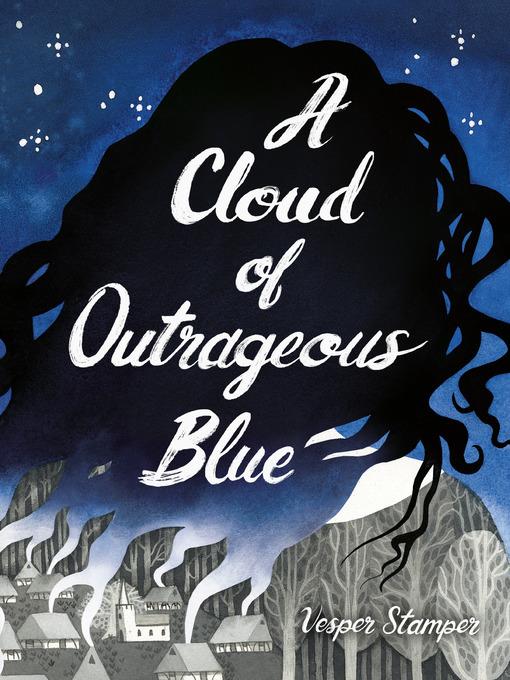
A Cloud of Outrageous Blue
فرمت کتاب
ebook
تاریخ انتشار
2020
Lexile Score
760
Reading Level
3-4
نویسنده
Vesper Stamperشابک
9781524700430
کتاب های مرتبط
- اطلاعات
- نقد و بررسی
- دیدگاه کاربران
نقد و بررسی

Starred review from May 15, 2020
Grades 9-12 *Starred Review* It's 1348. Orphaned and impoverished, 16-year-old Edyth is remanded to a priory to be a conversa, not a nun but a laborer. There she is assigned to the scriptorium, where she will learn to mix pigments. The colors are brilliant and inevitably remind her of her secret: she has synesthesia and thus sees sounds as colors. No one knows this, not even John Mason, a boy from her village for whom she has tender feelings; she is astonished when he shows up with a group of other stonemasons to rebuild the priory's chapel. The two steal time together, falling in love, but when they are discovered, the sub-prioress, Agnes, beats Edyth in punishment. When the kind prioress learns of Edyth's synesthesia and of a terrible dream the girl has had, she believes the dream to be prophetic, pronouncing Edyth a visionary. For indeed a terrible force strikes in the form of the Black Death. What does Edythe's vision have to do with this, and what will it mean for her relationship with John? The book?told in Edyth's first-person voice?is beautifully written, richly imaginative, and graced with fully realized characters. Parts are melodramatic, yes, but compelling nonetheless. As in What the Night Sings (2018), Stamper illustrates the story, making it a feast for fans of historical fiction with a magic twist.(Reprinted with permission of Booklist, copyright 2020, American Library Association.)

June 15, 2020
A synesthete in a medieval priory confronts the plague. Edyth, 16 in the year 1348, is sent by Lord Geoffrey, to whom she's bound, to Saint Christopher's Priory after her family dissolves. As a lay sister, she's expected to work for the nuns, not take vows, but she's not permitted to leave, even when a young man from her village comes in hopeful pursuit. Edyth's talent for drawing lands her first in the scriptorium, preparing pigments, and later illuminating manuscripts. Edyth feels, smells, and hears in color with overwhelming intensity. Her unusual abilities caused her to be distrusted in her village, and now she's seen as a possible prophet by the nuns--or, perhaps, cursed. When the plague reaches Yorkshire, locals flock to the priory in desperate waves, seeking medical aid. Then the story veers from grounded reality to mysticism, as Edyth finds a magic spring of healing water. Stamper illustrates the novel with her own spare, evocative, full-color drawings, bringing Edyth's synesthesia to vivid life. The story starts out strong but falters--many details dwelt upon in the beginning fade to nothingness, and the magical realism seems out of place: Since Stamper goes to lengths to show that Edyth's neurodivergence is a normal variant, later developments feel disingenuous. Some of the side characters come across as caricatures, and the plot doesn't quite hold together. Lovely writing but a bit of a missed opportunity. (glossary, author's note, translations, maps) (Historical fiction. 12-18)
COPYRIGHT(2020) Kirkus Reviews, ALL RIGHTS RESERVED.

June 29, 2020
Following the deaths, by murder and childbirth, of her parents in 14th-century England, Edyth le Sherman’s brother arranges for the 16-year-old synesthete to become a working resident at a Yorkshire priory. Artistic Edie is reluctant to leave the familiarity of her small hometown, especially Mason, a stonemason’s son with whom she shares a flirtation. Under the stern, watchful eye of Sub-Prioress Agnes de Guile, though, Edie finds joy in a new friendship and in her duties preparing pigments in the scriptorium. She also struggles to conceal two secrets: her renewed relationship with Mason, who arrives to rebuild a chapel, and her synesthesia, which causes her to associate colors with other senses and fall into a trance while grinding lapis lazuli. One day, during prayer, Edie notices a panel of stained glass in the church that shows an image from a recurring dream that has haunted her since childhood. She begins to feel “something’s unfolding” and, as the Black Death begins its rampage, wonders if she’s part of something bigger. Though modern language (“longest winter ever”) can distract, Stamper’s (What the Night Sings) dark and well-researched historical tale moves swiftly, incorporating elements of the miraculous and affectingly punctuated with elegant watercolor illustrations in hues that recall illuminated texts. Final art not seen by PW. Ages 12–up. Agent: Lori Kilkelly, LK Literary.

September 1, 2020
Gr 6 Up-After a series of misfortunes, 16-year-old Edyth gets sent off to Saint Christopher's Priory, where she discovers an unexpected home and passion. While there, she works in the Scriptorium, eventually becoming an illuminator, where her abilities fully blossom. Not only does this headstrong young woman love to draw, she has synesthesia-colors accompany sounds and smells-making her uniquely qualified to confront the forthcoming disaster. Stamper purposefully flips between past and present events and tenses to gradually reveal Edie's upbringing, new life, and a slice of the medieval world during the Great Plague of 1348. The historical parts are well-researched and influence aesthetic choices. Every chapter has one full-color illustration painted in a style inspired by medieval art. These, along with an array of descriptions, convey much about Edie's unique sensory perception. This book warns against extreme reactions to plague and death. It carefully avoids placing blame on social structures or religion, instead pointing to fear and mob mentality. While there is a miraculous element, the solution ultimately comes from the strength and faith of Edie and her bonds with others. Stamper's art style depicts characters' skin as the same white as the page, and Edyth is drawn with long black hair. VERDICT A timely, historically inspired work about women's roles and surviving the Great Plague that teens can use as a comparison to their own predicaments.-Rachel Forbes, Oakville P.L., Ont.
Copyright 2020 School Library Journal, LLC Used with permission.

























دیدگاه کاربران